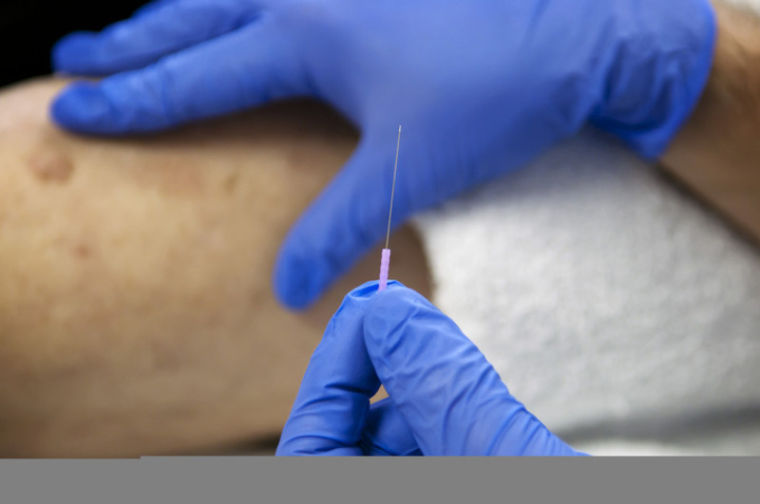Dry needling technique helps relieve pain in many patients
Published 10:30 am Monday, February 10, 2014

- Physical Therapist Nathan Johnson (right) shows the needle he uses during the Sue Goessling of Bowling Green dry needle therapy, Friday, Feb. 7, 2014, at Bluegrass Outpatient Center. (Miranda Pederson/Daily News)
Sue Goessling was in a lot of pain from hip bursitis for several months.
She decided to get it treated with needles.
Trending
“I was using a cane, and I couldn’t walk,” the Bowling Green woman said. “I had pain in my leg. It was full of knots. I found relief from the first treatment.”
It might seem counterproductive to use needles to treat pain, but some Bluegrass Outpatient Center physical therapists trained in the technique are doing trigger point dry needling to help patients.
The treatment, which doesn’t use medication, is not acupuncture.
“It’s an intramuscular technique or treatment of trigger points,” said Nathan Johnson, a physical therapist at Bluegrass Outpatient Center. “We find a trigger point. I’m going in with a monofilament small needle.”
Johnson asked Goessling to flex her thigh as he placed the needle there.
“You put the small needle in the trigger point and go through the muscle,” Johnson said.
Trending
Goessling, who has had four dry needling treatments since Jan. 14, didn’t flinch. Sometimes the patient feels a twitch, sting or ache like “a workout soreness,” Johnson said.
“It’s not painful. I call it a zing,” Goessling said.
Johnson has used the technique, which has needles in different sizes, in the gluteal and lower back muscles and outer thigh. It’s not a treatment to be used alone. It should be used along with exercise, massage and manual therapy, Johnson said.
“I do a lot of other things before I come,” Goessling said.
While Goessling was getting other treatment for her condition, Johnson told her about dry needling. Her pain started after she had been cleaning her sleigh bed and bumped into it. She got an X-ray and an MRI before her diagnosis.
“I hadn’t heard of (dry needling) before, so naturally I looked it up. It couldn’t make it any worse,” she said. “I was very leery at first. I had lots of trigger points when I first started. What was beneficial for me was that I was already his patient.”
Many dry needling patients are treated once a week for three or four weeks, but some go longer.
“It depends on the response,” Johnson said. “Sometimes it’s effective, and sometimes it’s not.”
People who shouldn’t get dry needling include those with vascular disease, local infection, lymphedema and bleeding disorders, he said.
— Follow features reporter Alyssa Harvey on Twitter at twitter.com/bgdnfeatures or visit bgdaily news.com.







